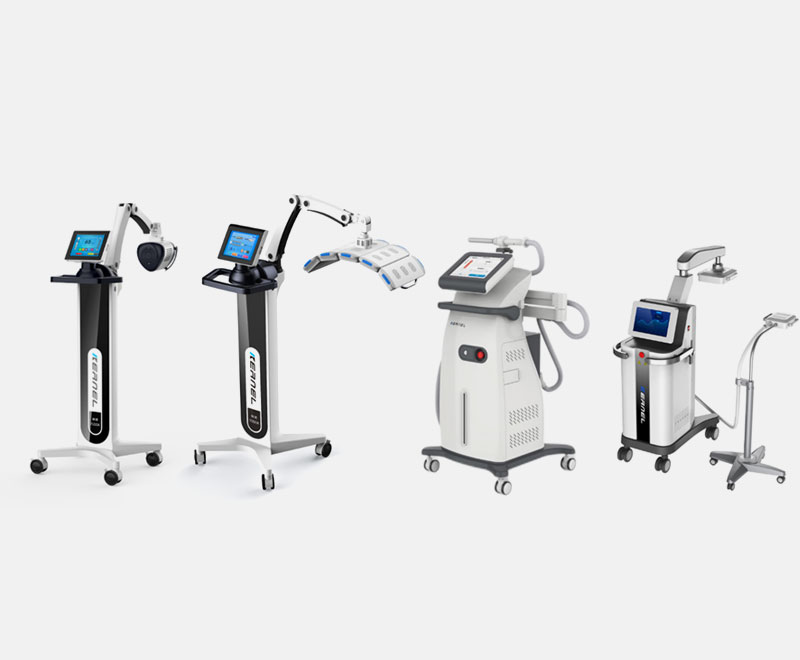1. Common Sites for Vitiligo
Lesions can occur at any age and on any part of the body but are most commonly found on the face and around orifices (such as the areas around the mouth, eyes, and anus), the genitals, and the hands. Lesion sizes vary from a few millimeters to several centimeters, typically with raised borders that sharply contrast with the surrounding normal skin.
Prof. Wang Hongwei's Column | Vitiligo Knowledge Base (Image 1)

2. Classification of Vitiligo
Based on the distribution pattern of depigmented lesions, vitiligo is classified into two major types: segmental and non-segmental (the most common type). The latter can be further subdivided into several subtypes, including localized, disseminated, generalized, and acrofacial. Segmental vitiligo involves lesions along the dermatomes of a specific skin nerve segment, generally appearing on one side of the body.

Prof. Wang Hongwei's Column | Vitiligo Knowledge Base (Image 2)
3. Associated Conditions with Vitiligo
Common skin diseases associated with vitiligo include psoriasis, alopecia areata, dermatographism, lichen sclerosus et atrophicus, twenty-nail dystrophy, persistent pigmented purpura, and Bazex syndrome.
Immune system abnormalities are a significant cause of vitiligo, which is why it often co-occurs with various autoimmune diseases. Changes in some autoimmune conditions can directly impact the progression of vitiligo, including thyroid disease, diabetes, Addison's disease, autoimmune polyglandular syndrome, pernicious anemia, and rheumatoid arthritis.
4. Common Trigger Factors for Vitiligo
The exact cause of vitiligo is unknown, but certain factors can trigger its onset, exacerbate existing lesions, or cause new lesions to appear:
Sun exposure is a significant trigger for vitiligo. The disease often occurs after activities like traveling, sunbathing, or sunburn, particularly on exposed areas.
Psychological stress can lead to rapid disease progression. For instance, some patients experience a quick expansion of lesions following significant emotional trauma.
Chemical exposure is another trigger, most commonly from contact with phenolic compounds.
Injuries, burns, surgery, friction, pressure, and scratching are frequent triggers for vitiligo. Additionally, inflammatory skin conditions like dermatitis and eczema can also lead to pigment loss, with some patients developing vitiligo at these sites.
5. Variability in Vitiligo Onset
The prevalence of vitiligo is roughly equal among men and women, with no predisposition based on race, ethnicity, or socioeconomic status. Vitiligo can occur at any age, from early childhood to late adulthood, with the highest incidence between 10 and 30 years old. Approximately one-third of vitiligo patients are children, and 70%-80% of adult patients develop the disease before the age of 30.
6. Efficacy and Method of Narrowband UVB Therapy for Vitiligo
Narrowband UVB therapy uses ultraviolet lamps with a peak emission wavelength of approximately 311nm. This therapy induces local immunosuppression and cell apoptosis, stimulates the production of melanocyte-stimulating hormone, basic fibroblast growth factor, endothelin-1, and promotes melanocyte proliferation and melanin production. Narrowband UVB therapy is typically administered 2-3 times a week, with an average duration of 9-12 months.
The therapy has a low erythema response rate, provides long-term disease remission, and is simple, convenient, and safe to use. It is widely used in China, with various home treatment devices available.
7. Principle and Advantages of 308nm Excimer Light Therapy for Vitiligo
The 308nm excimer light's wavelength effectively treats skin diseases by inducing T-cell apoptosis, improving local immunity, stimulating melanocyte proliferation, enhancing local microcirculation, promoting melanin synthesis, and activating pseudo-catalase.
The 308nm excimer light is a targeted phototherapy method that offers quick, precise treatment for vitiligo, protecting surrounding normal skin from pigmentation. It is particularly effective for localized vitiligo, especially on the face.
8. Precautions for Vitiligo Patients
Avoid skin injuries and friction; patients should not wear tight clothing.
Protect the skin from sun exposure when going outdoors. Avoid strong sunlight, especially during activities like swimming at low latitudes or traveling to high-altitude regions. Ultraviolet rays can damage the skin, triggering or worsening the condition.
Avoid chemical irritants; patients should refrain from hair dyeing, nail polish, and frequent contact with harsh chemicals.
Maintain a balanced diet without restrictive eating. Minimize or avoid smoking and alcohol. Vitamin supplements may be beneficial.
Understand that vitiligo is a chronic disease requiring long-term treatment and follow-up. With early and active treatment, most cases can be controlled or cured. Patients should maintain an optimistic attitude, as excessive anxiety may worsen the condition.


